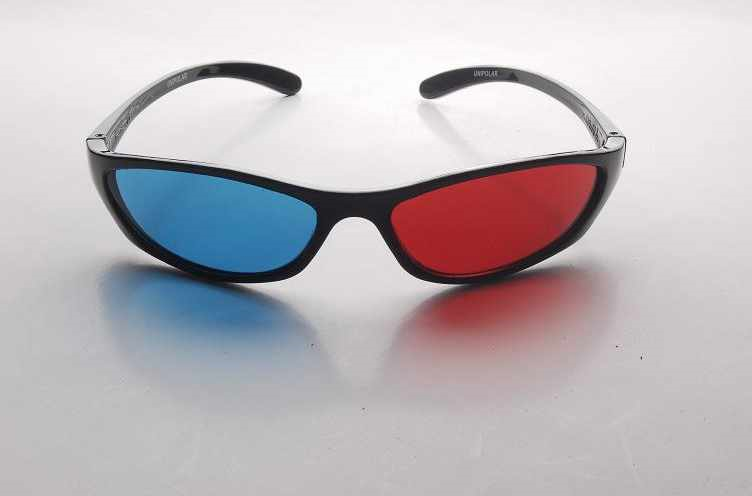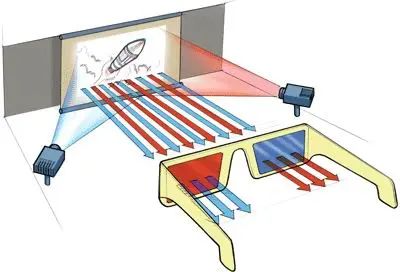3D glasses, also known as "stereoscopic glasses," are special glasses that can be used to view 3D images or images. Stereoscopic glasses are divided into many color types, more common is red blue and red blue.
The idea is to allow both eyes to see only one of two images of a 3D image, using the passage of light in corresponding and different colours. 3D films are becoming more and more popular among audiences. Currently, there are three kinds of 3D glasses on the market: chromatic aberration, polarizing and time fraction. The principle is that the two eyes receive different images, and the brain will combine the data from both sides to create a three-dimensional effect.

The physics of 3D glasses
Light wave is electromagnetic wave, electromagnetic wave is shear wave, shear wave vibration direction and propagation direction is perpendicular. For natural light propagating in a certain direction, its vibration direction is found in all directions in the plane perpendicular to the propagation direction. If, when the vibration with only one direction is called linear polarized at this moment, the way a lot of linear polarized, polarizing film is the most convenient way, in the middle of the polarized lens film contains numerous tiny rods crystals, are evenly arranged in one direction order, so that you can put the natural light to become polarized into our eyes. Such as:
The principle of polarized 3D glasses is that the left eye and the right eye of the glasses are respectively equipped with a transverse polarizer and a longitudinal polarizer. In this way, when the film made using polarized light technology is played, the image of the left lens is filtered through a transverse polarizer to obtain transverse polarized light, and the image of the right lens is filtered through a longitudinal polarizer to obtain longitudinal polarized light.
Using this property of polarized light is exactly what stereoscopic cinema needs -- to make the right and left eyes look completely different. By equiping two projectors with polarizers, the projectors project perfectly polarized light waves perpendicular to each other, and then the viewer can see the right and left eyes of each other without interference through specific polarized glasses.
In the past, polarized 3D glasses were just coated with a polarizing layer on the surface of ordinary glasses to form the polarizing film, which was very cheap. But this method has a defect, while watching the film to sit upright, can not tilt the head, otherwise it will be double. Now, when watching a 3D movie, the polarizing lenses worn by the audience are circular polarizers, that is, one is left polarized and the other is right polarized, which can also let the audience's left and right eyes see different pictures, and no matter how to tilt the head, there will be no double vision.

Elaborate classification
Color difference mode is the cheapest way to watch movies. The playback device will display the left and right pictures in different colors (red and blue are common). With glasses, the left eye can only see the picture of A color (such as red light) and the right eye can only see the picture of B color (such as blue light), so as to realize the three-dimensional presentation of the picture of the left and right eyes. But when the color is close to the red filter is not finished or the blue filter is not finished, there will be double shadow, it is difficult to have a perfect effect. Long after the eyes will also cause a short period of color discrimination caused by the obstacle.
The shutter mode is achieved by switching between the left and right eye frames to achieve a 3D effect. Unlike polarizing, shutter mode is an active 3D technology. The shutter 3D player will actively switch between the left eye and the right eye. That is, at the same time, the polarized 3D picture contains both left and right pictures at the same time, but the shutter type is only left or right pictures, and the 3D glasses switch the left and right eyes at the same time. When the screen shows the left eye, the glasses open the left eye and close the right eye; When the screen shows the right eye, the glasses open the right eye and close the left eye. Because the switching speed is much shorter than the temporary time of human vision, it is impossible to feel the flicker of the picture when watching the film. But the technology maintains the original resolution of the image, making it easy for users to enjoy true full HD 3D without degrading the brightness of the image.
Post time: Aug-19-2022

